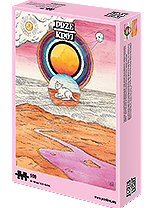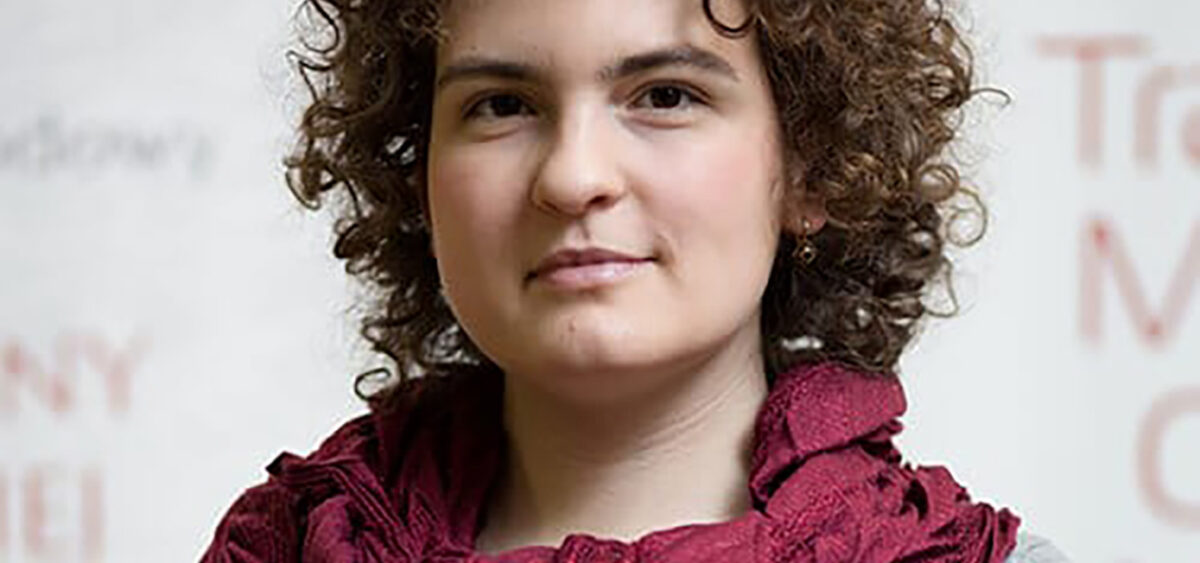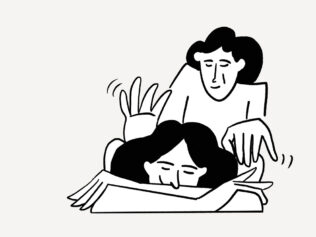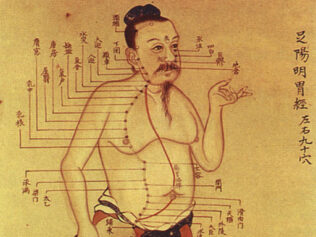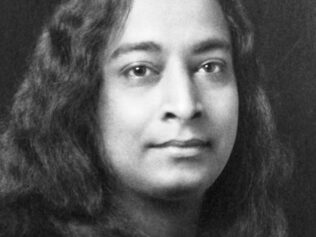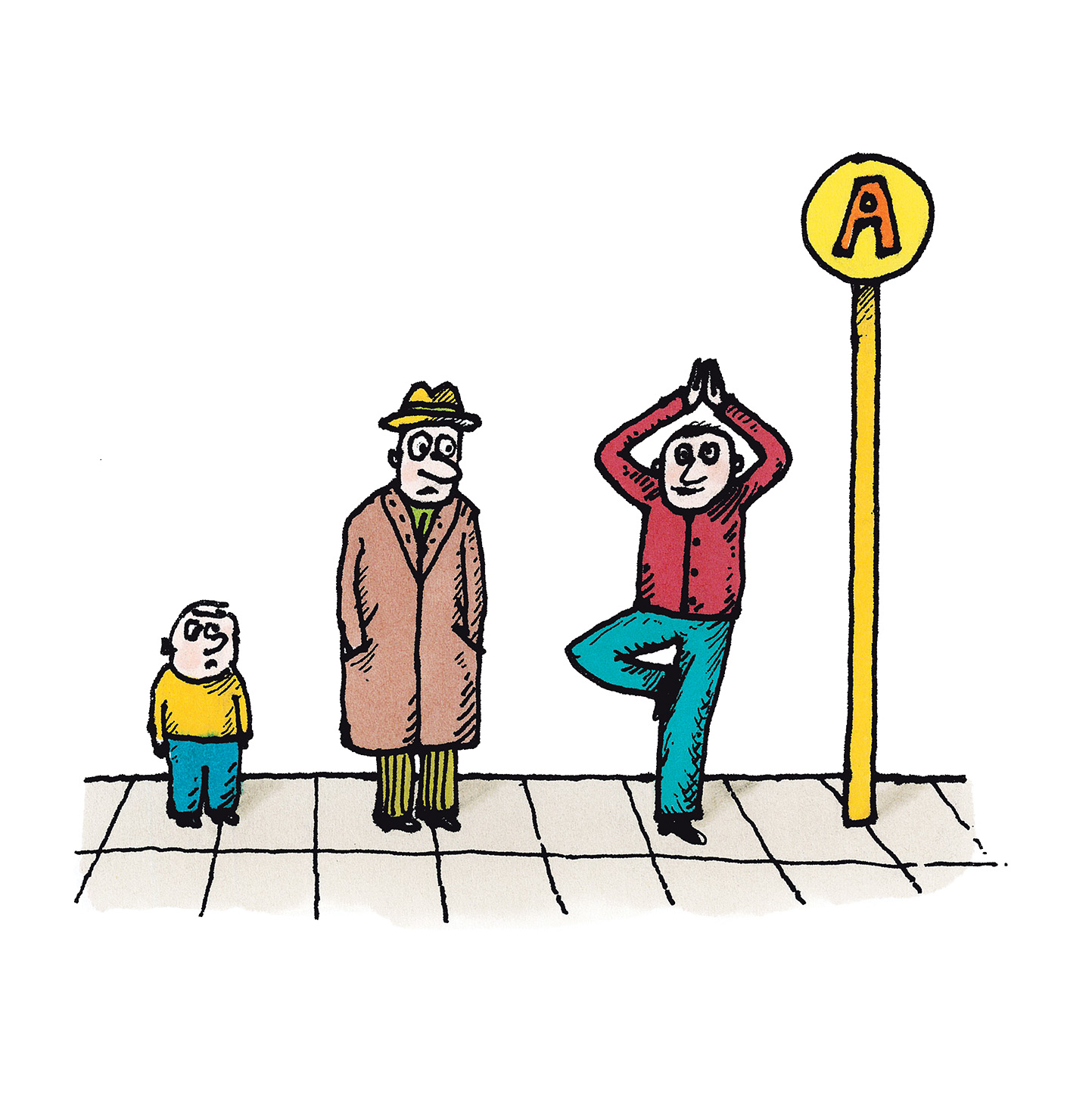
According to some folk doctors in East Asia, moxibustion—the burning of dried mugwort leaves on the skin or above it—can warm the body and improve the flow of energy in it. Helena Olearska, a medical doctor as well as a traditional Chinese medicine therapist, talks with Agnieszka Rostkowska about the heat that heals.
In traditional Chinese medicine (TCM), moxibustion (also known as moxa) has been used for centuries to treat diseases arising “from cold and damp”—those that are most often experienced in fall and winter.
Agnieszka Rostkowska: In my hand there is something that looks like cotton wool. It is yellow-green, soft, and pleasant to the touch. Can you tell me more about it?
Helena Olearska: It’s Chinese mugwort, a plant reaching no more than three feet in height, with feathery leaves and small flowers, used for centuries in TCM. It is harvested and then dried, often for many years, so that it acquires healing properties.
The leaves and stems are what is known as green moxa. The name comes from the color of the dried plant, which is most often dried for one to three years. The leaves themselves are the so-called gold moxa—this color is obtained after five, eight, or ten years of maturation. The longer it is aged, the more expensive it becomes, although the quality is not necessarily better. Individual types of moxa are simply used for different purposes, but they are all valuable.
They can all be used for moxibustion, but what does this refer to?
“Moxibustion” is a combination of two words: moxa and combustion. It consists of moxa being rolled into cigar-like shapes—it is available for sale in this form. Such “cigars” are lit and then, smoldering and smoking, held just above the patient’s skin to heat specific acupuncture points. One can also use tiny, loose moxa grains or moxa cones, which each therapist must form themselves, because the cones are placed directly on the body and lit immediately after being created. The size of the grain or cone is adjusted to the required burning time. The procedure usually lasts from several minutes to around a quarter of an hour. It finishes when the patient feels a clear “prick” of heat, which is a sign that the moxa will soon begin to burn the patient.
In the past, in China and Japan, cones were allowed to burn to the end to form a scar on the skin. Moreover, the skin was lubricated with special ointments that did not allow the burn to heal. Such scarification was treated as the inactivation of an acupuncture point. Today this is no longer practiced, except perhaps in some Chinese villages.
Currently, moxa cones are most often placed on a slice of fresh ginger, which acts as a buffer—it prevents burns, but also has a number of beneficial properties. In Chinese herbal medicine, ginger is considered one of the products that heats the body the most. The buffer can also be garlic or salt, although the latter is used only in one place: the navel, i.e., the so-called Ren 8 point.
What is the reason for heating these points?
In TCM, it is believed that if a disease does not go away under the influence of acupuncture or herbs, it means one needs to add heat—yang energy—which supports all processes in the body, including healing process. It is believed that heat improves the flow of qi (or life energy), so it allows one to deal with stagnation in the meridians—the network through which qi flows. All this is also justified in Western physiology, because due to heat, blood vessels expand, fluid flow in the body improves, and so does circulation. There are not many other methods to support the body with heat. In addition to moxa, therapists can only use fire cupping and fire massage, which is a traditional method from Tibet.
Moxa is unique because it combines as many as three beneficial effects. The first is the stimulation of appropriate acupuncture points, i.e., biologically active places that perform important functions. The second is local heating, and the third is the smoke emitted during the combustion of the dried plant.
This smoke, especially if it comes from green moxa, can be irritating. Is it harmful?
In China, TCM treatment rooms are full of it, therapists and patients breathe it in, regardless of whether they are being treated with moxa. It contains primarily mono- and sesquiterpenes, and their concentration depends on the quality of the moxa used. Individual types of terpenes have a calming, muscle-relaxing, pain-relieving, and anti-inflammatory effect. In addition to terpenes, moxa contains a lot of other substances with beneficial effects, such as essential oils.
During my numerous internships in China, I never encountered a case where the smoke from the moxa harmed the patient. In the West its smell is usually perceived as quite unpleasant, so in European countries many TCM treatment rooms use Japanese moxa. This is a technique in which only golden moxa formed into tiny grains is burned, meaning there is much less smoke.
There is also smokeless moxa. It comes in the form of a cigar which when burned does not emit any smoke. Such moxa has been additionally subjected to a carbonization process, which is why the cigar resembles a coal stick. It retains its shape and, unlike loose moxa which can be held in the hand, it does not have to be wrapped in anything. However, the opinions of therapists about its effects are divided. Mainly because, unlike gold or green moxa, there is no way to assess the quality of charred moxa based on its appearance. It is odorless, so it cannot be judged on the basis of smell either.
What diseases can moxa help with?
Moxa is particularly effective for diseases related to cold and damp. “Cold illnesses” is a term from TCM that describes conditions experienced in fall and winter, when one is cold, feels weak, wants to sleep, and lacks energy. If damp is added to this cold, then fluids and nutrients are not properly distributed throughout the body and swelling, stagnation, and various types of accumulations, such as lipomas and cysts, may appear. But this is a big oversimplification. TCM should not be directly translated into Western terminology because there is a risk that the patient will draw the wrong conclusion, for example, that moxa can cure cysts. To be clear—moxa cannot treat conditions that comprise morphological changes, such as the aforementioned cyst—here, the patient needs an accurate diagnosis and a comprehensive treatment plan.
Moxa is most often used for gynecological disorders, such as dysmenorrhea, as well as for fertility problems and digestive ailments including reflux, heartburn, and indigestion.
Hence the extraordinary career of “the great doctor,” the stomach acupuncture point that is treated with moxa in almost every patient.
Stomach Point 36 is called “Leg Three Miles” or just “the great doctor,” because in the case of the direct moxa technique it is used in virtually all treatments. It is located just below the knee and it is traditionally said that if someone burns a thousand cones of moxa on it, they will live long because treating it with moxa strengthens the entire immune system.
Was moxa described, like other methods of treatment, in Huangdi Neijing (literally The Inner Canon of the Yellow Emperor or The Esoteric Scripture of the Yellow Emperor), a famous work from the fourth century BCE, still considered the most important compendium of knowledge about TCM?
In Huangdi Neijing moxibustion is only mentioned as a heat treatment. Unlike acupuncture, which had to be learned for years and which was used only by qualified people, moxibustion and herbal remedies are derived from folk medicine. Moxa has been used in China for centuries, by families from all social strata, and even by monks in temples. Knowledge about moxa comes from oral transmission which only started to be written down around the 16th century. At the same time, moxotherapy developed in Japan—most of the modern literature on moxa comes from there.
When did Europeans start using moxa?
It is known that TCM was brought to Europe by the Jesuit Michael Boym in the 17th century, but no sources confirm whether moxa arrived with him at that time.
Today, moxa is becoming more and more popular in North America and Europe. In Poland it can be bought in many shops, especially online, at quite affordable prices. But why is a plant that grows locally imported from China?
Indeed, mugwort, commonly called wormwood, grows almost all over the world. It was used in natural medicine in Slavic countries, as incense and for infusions, with the knowledge that it has antiparasitic and drying properties, meaning that it helps stop diarrhea, assists with digestion, relieves flatulence and indigestion. Wormwood can also help induce menstrual bleeding, so it was used as an abortifacient in the past. Because of its calming properties, one of its species—Artemisia absinthium—was used to produce absinthe. However, in the Slavic tradition, such a technique as moxibustion was never used and no one dried herbs for years. For moxibustion the Artemisia argyi variety is used, also known as silvery wormwood and Chinese mugwort.
Is it true that summer is the best time to start using moxa?
In TCM it is believed that it is necessary to act before the symptoms of a disease appear, so for fall and winter one should prepare in the summer. Following this logic, moxibustion is recommended at this time of year, especially since yang energy is then closer to the surface of the body, thanks to which it can be more easily accessed and strengthened.
The dragon moxa technique is performed only in July and August. It consists in arranging loose moxa along the entire length of the patient’s spine, to affect the Du Mai Governing Meridian, responsible for yang energy. Dragon moxa is a very strong procedure and requires not only an experienced therapist, but also a comprehensive, previously conducted diagnosis so as not to overheat the patient.
Some therapists, however, believe that moxa should not be used in the summer because it is a technique designed to treat cold conditions and so should only be done during the cold months.
You teach your patients how to use moxa themselves. A seemingly simple technique, and yet novices can expect a few hurdles. For example, moxa is surprisingly difficult to extinguish.
An effective method is to create an anaerobic environment—extinguish it in salt or close it in a jar. Special extinguishers are also available. Nowadays there are a whole lot of accessories for moxibustion. There are, among others, “tiger warmers”—rotating rollers with a handle. A cigar is inserted into the middle enabling one to roll and thus heat larger areas of the body by themself. There are also boxes for loose moxa, which are great for those with gynecological problems and gastrointestinal ailments.
There is also a very contemporary form of the herb—electronic moxa.
Electronic moxa is mainly produced and used in Japan. In appearance it resembles a pen, only larger in size, and it is used to heat the tissue through point radiation. A moxa lamp, or TDP lamp, is a standing lamp designed to heat large parts of the body. Instead of light it gives off heat, and the lampshade has a built-in insert with minerals which are then released. Such an insert must be replaced on average every two years.
However, electronic moxa and the moxa lamp have nothing to do with real moxa, except for the name. They are good healing methods, though, which also give great results.
Parts of this interview have been edited and condensed for clarity and brevity.
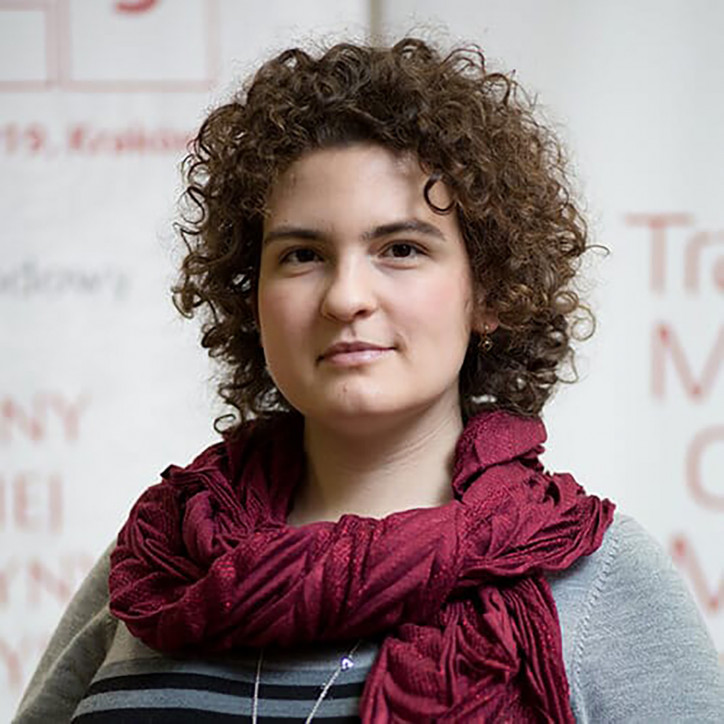
Helena Olearska:
A medical doctor currently working on her doctorate and specializing in internal medicine. She has worked with TCM and natural methods of treatment for over ten years. A graduate of the Collegium Medicum at the Jagiellonian University in Kraków.

